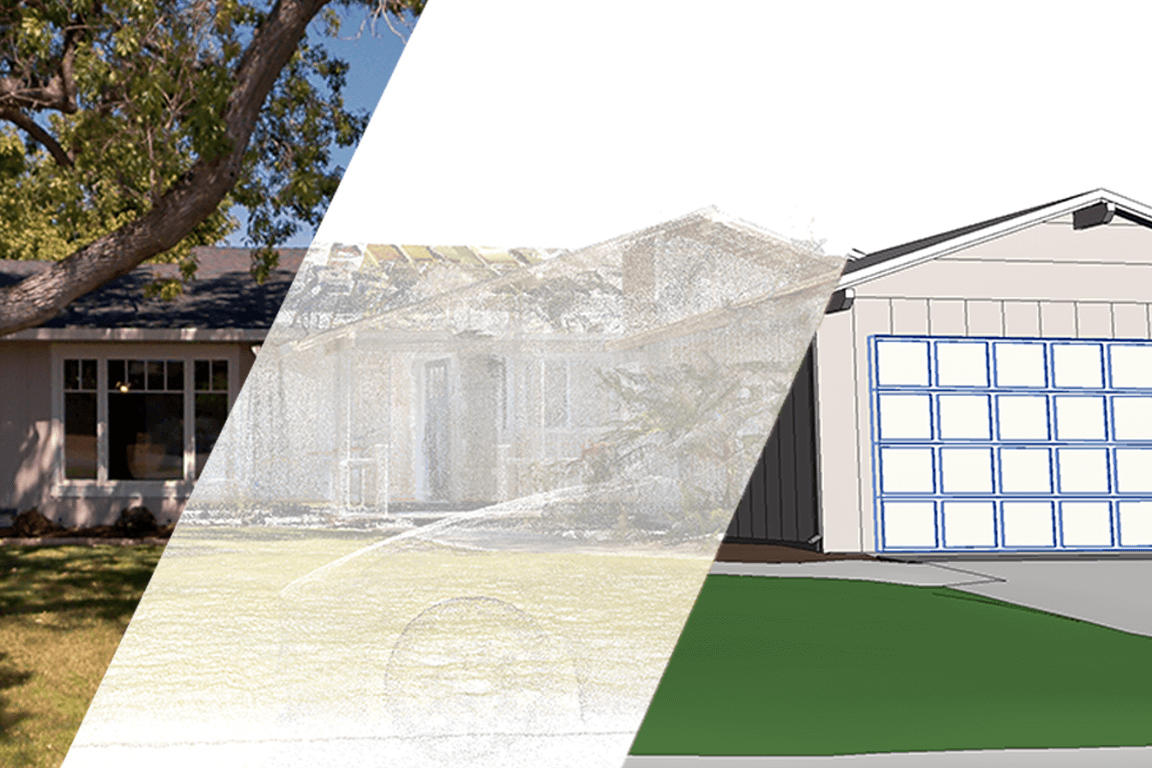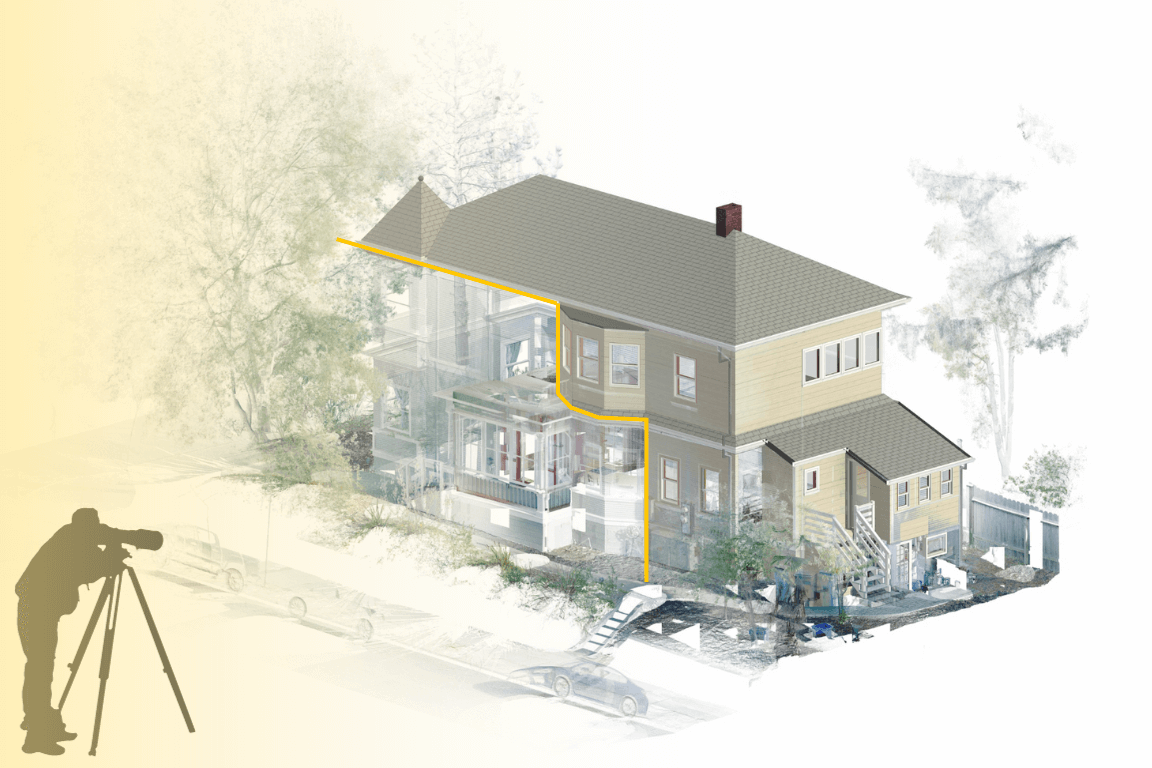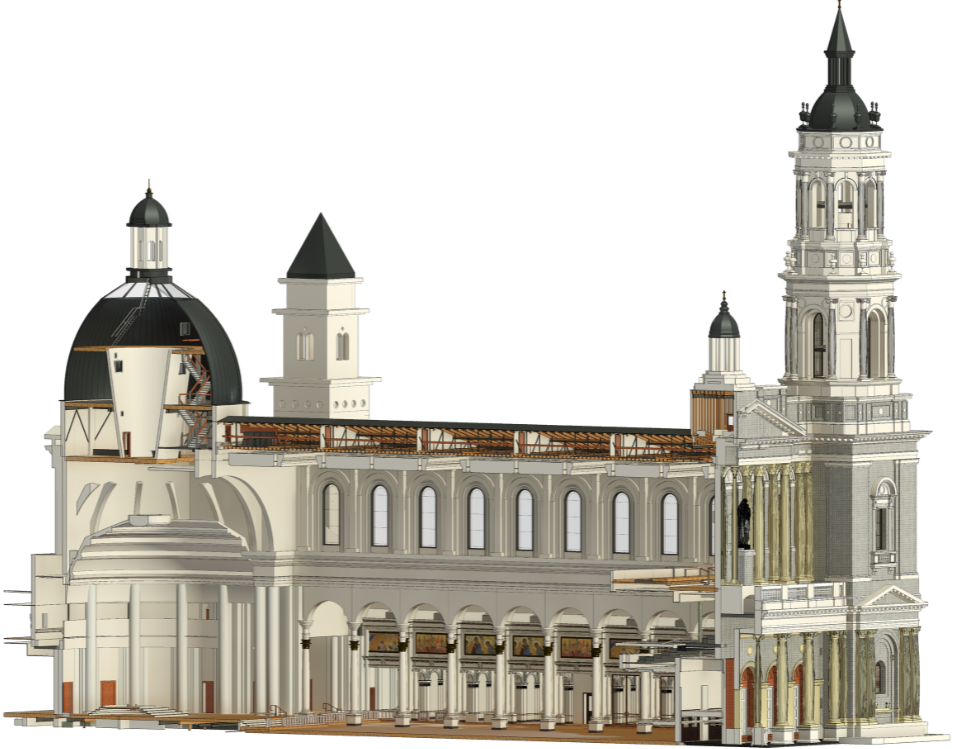What is 3D Laser Scanning?
It’s been Hundreds of times that you have heard about 3D scanning and Scan-to-BIM 3D laser scanners, but what really is that? Let’s discuss the HD scanning technology and its benefits, so you can clarify for yourself if it’s worth doing in your case and how best to use it if so.
It doesn’t matter where you stand right now, whether you’re an engineer or you’re a homeowner, many people can benefit from it and use the data long term working on your project. Is that your only project, or you’re doing ten of them every year, We will walk you through the understanding of its technology, multiple benefits, and best practices to use it.
Long story short, 3D laser scanning is a futuristic tool for capturing data about the object such as size, shape, color, position, and so on, 3D scanning is the process of data collection, but let’s learn more about it.
What is 3D Laser Scanning?
Imagine you want to create a super accurate digital copy of your project to work on remodeling or design. That's where laser scanning comes into the game. High Definition Scanning is the process of using a super high-tech camera that shouts invisible light lines, we call them laser beams. Each line of laser light bounces back once it touches the surface, understanding the distances between the objects, as it knows the speed of light, and can analyze the distance by calculating how long it takes for the laser beam to bounce back to the scanner. Depending on the type of camera, it will collect information about how wide are the windows and doors, what are the elevation changes of the floors, and how high the ceiling is. By moving the HD laser camera we can collect data not only about the interior of the structure but also about its exterior and surroundings.
Now, when the survey is done, we will create a "ghost twin" of the project on the computer by connecting the laser dots that we collected using special scanning software to process the point cloud. From this moment we can keep it as a digital twin, we can create a BIM model based on this point cloud, and reuse it multiple times to add more details to our 3D CAD model or review the collected dots. We can name four phases of laser camera work: sending out the laser beam, bouncing back, measuring time aka distance, and creating a point cloud. As a human you can not see these processes inside the device, from aside you will see a technician moving this futuristic tool from one room to another. It can be a static device, that needs to be placed on the tripod for some time and then moved to another location, or a mobile scanner that works faster, as the person moves.
Application of 3D Scanning
The application of 3D laser scanners spans across various industries, proving to be a versatile and invaluable technology for capturing real-world data with unparalleled accuracy and efficiency. Beyond its widespread use in construction and engineering, 3D scanning is also applicable in a diverse range of fields, revolutionizing processes and enhancing decision-making across industries.
Construction and Architecture
In the construction and architecture sectors, 3D laser scanners are utilized for as-built surveys, construction verification, and sequencing. By capturing existing conditions of buildings and sites, laser scanning assists in design planning, clash detection, and facility coordination. Architects and engineers can create digital twin models and evaluate various design scenarios, ensuring optimal project outcomes.
2. Manufacturing and Industrial Design
Reproduction of complex assemblies is difficult without the drawings, so reverse engineering is a great and unmatched tool. With the proper data acquisitions, these industries benefit a ton from process streamlining.
3. Cultural Heritage Preservation
By creating digital replicas of historical monuments and delicate artifacts, we have a chance to keep up proper documentation for restoration and educational purposes while reducing physical handling and potential damage.
You can view this project on this page.
4. Entertainment and Media
Replicating real-world scenes and objects to create lifelike digital assets for movies, video games, and virtual reality experiences is widely used in the media field. Lots of scenery locations are edited and extended in the specialty software, but before that, they have to be measured and captured with the right technology.
5. Archeology
Analysis and preservation of ancient ruins and artifacts requires a good accuracy of collected data, 3D scanning methods allow us to study the historical finds and the surrounding environments, create historical maps, and so much more.
6. Crime Scene Investigation
This technology facilitates detailed documentation of crime scenes and accidents. Due to the diversity in sizes and quality of different scanners, the crime scene can be captured even in the most hardly accessible places allowing us to come back to the place without actually going there to gather more information.
7. Environmental Monitoring
To live in such a fast-paced changing environment is a big responsibility for humanity as we have to act fast to liquidate the issues in nature. Accurate 3D laser monitoring allows us to keep an eye on changes in landscapes, glaciers, forests, and more so that scientists can study and respond to the existing and upcoming changes.
8. Transportation and Infrastructure
In transportation, laser scanning aids in monitoring and maintenance of roads, railways, and bridges. The technology assists in detecting structural deformations and conducting comprehensive asset inspections.
9. Robotics and Automation
To ensure that all robotic components work and fit as they were intended to, 3D scanners are used to analyze the existing parts, to measure and calibrate the robot's position, and measure the sizes and shapes of the real-life objects for task programming like "picking up", "avoid", "dispose" and so on.
10. Medical and Healthcare
Like never before professional 3D scanning solutions are used in dentistry to recreate digital impressions of jaws, gums, and teeth, which plays a great role in implants and crown creation, as well as generating progress of changes while using teeth devices like Invisalign or similar. .
Of course, there are many more fields where 3D scanning technology is used, and it will be getting more and more utilized, as it is an unparalleled solution for the progressive world to capture unusual sizes and shapes quickly and precisely.
Benefits of 3D Laser Scanning
The benefits of high-definition scanning are hard to underestimate in the architectural field. It has been used for a decade now and keeps progressing in terms of quality and speed, finding more areas of its use, and developing better solutions and techniques. Here are some of the primary advantages that laser 3D scanners bring to our work:
Speed. While it takes hours and days to correctly measure the structure, the scan data that we receive from a camera is gathered very quickly. Sometimes the scan process might look very time-consuming, however, if we take into account that it collects the information on x, y, and z coordinates, it actually collects more information in a shorter period of time. And, you only need to come once to the site to scan objects, without a need for multiple revisits.
Accuracy. Since the 3D scanning process is very complex, the scanners measure all disciplines at the same time, meaning that we not only have the dimensions of the items scanned, but we also accurately understand their relations to each other. There is no space for human mistakes like writing a wrong dimension, confusing somebody's writing, or forgetting to measure some objects. The errors still may occur during the BIM modeling stage, but they are easily detectable thanks to 3D data gathered during the survey.
Accessibility. You might not want to have your property scanned because you only need a regular floor plan now, but let's look at it in perspective. It is for a reason that you need this floor plan, and scanning is a technology that allows you to come back to the point cloud and work again with laser dots or lines, meaning that you can add more detailing to your project as you go. The best part is that once your property was hit by the laser beams and the point cloud was processed, you can keep on adding more details like ceiling information, door and window schedule, roof plans, lighting devices and so much more.
Ease of use. You will need 3D modeling software in order to work with the laser-scanned point cloud, and it is not easy to do without a specific skill set and software package, although, your team of professionals will benefit from using it widely. You can create the design and reconstruction and see how it fits within the digital 3D model.
Types of 3D scanning devices
Laser scanners progress quickly and we can see more and more scanners using different technologies on the market every year. Let's look into some most popular and most used scanner types:
TLS scanners
TLS scanners otherwise called Terrestrial Laser Scanners, are stationary and need to be placed on a tripod and left for a couple of minutes at each location, later they need to be relocated, and the action of capturing needs to be repeated again, and again from a different point. This type of camera is commonly used for long-range scanning of open spaces, exteriors, and larger structures.
2. Mobile Laser Scanners
These scanners are meant to scan in the move, they can be mounted to a drone, vehicle, or another moving object or a robot. They were mostly used to scan the streets, landscapes, and road conditions, however, we now see the cameras that are being placed on people's shoulders and backs, and they are used in architectural fields as well.
3. Handheld 3D scanning
With the extension and improvement of mobile scanners, we can now carry a small and light 3D scanner to make the 3D laser scanning process even more efficient by scanning the areas that humans can hardly access, but a hand with a small device can easily get into like smaller cupboards, cabinets, etc.
4. Mobile phone scanning
Modern smartphone companies work hard to improve their cameras and lenses, thus we can now use our phones for scanning. Needless to say, you will not see any smartphones in the list of the best 3D scanners today, but they still offer the use of 3D capturing with the use of additional software. Please keep in mind that a laser line will deteriorate as your hand naturally shakes as you breathe, therefore, as of today, the use of smartphones is not recommended for precise measurements.
The are two major types of 3D scanners:
LiDAR aka Light Detection and Ranging. The camera creates a laser pulse that projects laser light onto the object, and by receiving the reflection by the laser range finder of pulses of light the scanner understands the distances between the obstacles. The time-of-flight scanners also fall under the same type of equipment. LiDAR 3D scanners can be used to capture larger projects, like forests, archeology, and larger buildings, although they're good for smaller projects too.
SLAM stands for Simultaneous Localization and Mapping. Most of the mobile scanners will be using this scanning system. SLAM 3D scanning is useful on time-sensitive or larger projects. How does it work? The latest 3D technology, where the scanner not only uses the laser for dimensions but also understands the location of the camera, evaluating the speed of movement and relocation of it. These scanners will work best in environments where time is of the essence, like large warehouses, factories, schools, etc.
How to choose the best 3D scanner?
Since nowadays we use a 3D scanner more often than ever before, we need to understand what camera to select and which of various software packages we need to prioritize to create a 3D model-twin of a real-life object.
The key point to remember is that scanning is a process of collecting the information in order to create a 3D model, therefore, we need to go from our needs and focus points when choosing a service or a camera.
We will not mention any names, because time is changing fast, but we will share some tips and what to consider when choosing the best camera.
Pretty much all 3D scanners work similarly, it will depend on your goals:
Is that speed or is that accuracy?
What is your budget frame?
Will you be using 3D modeling software?
Please consider your load of projects and potential use of 3D scanning devices before investing in a camera that will be outdated in a year or two.
Now, understanding the different types of technologies of the different 3D scanning devices, you will be able to make a well-informed decision.
To produce a 3D model of high quality we also recommend combining the machines. Let's say you can scan the factory with the SLAM device because it will be way faster than the time of flight 3D scanners, but leave the structural areas on the attic and foundation for the LiDAR stationary camera, where the laser beam is projected onto each structural component. We will also want to use cameras with photogrammetry 3D scanning technology if we want to pick up textures and colors during data acquisition.
Laser scanning technology is used to create a 3D point cloud, which is then used in BIM modeling to develop an accurate 3D CAD model. By combining advanced tools, software, and experienced expertise, we deliver consistently high-quality results.

















